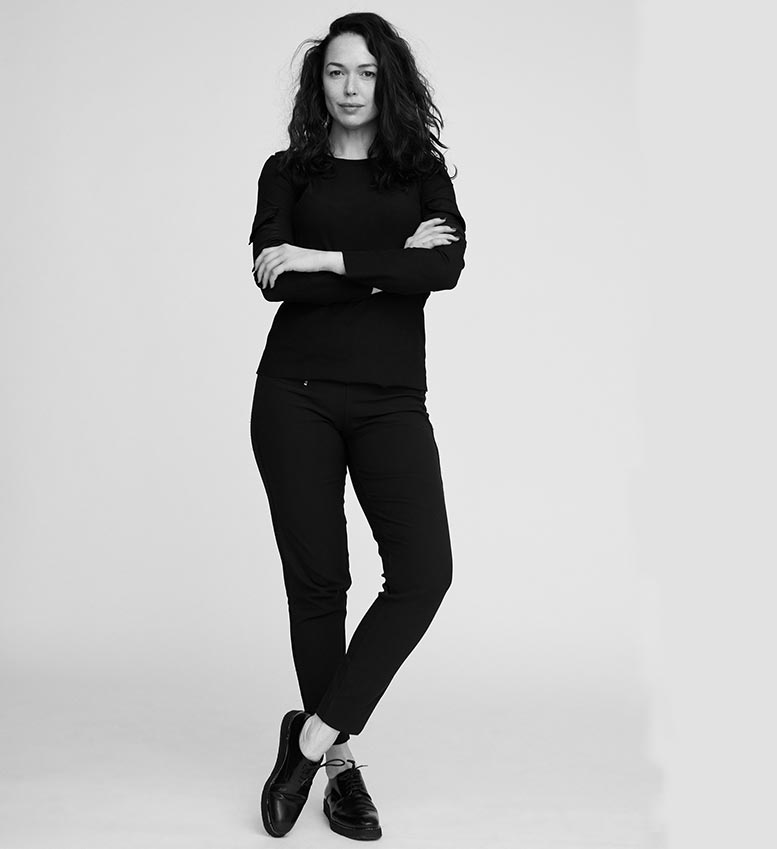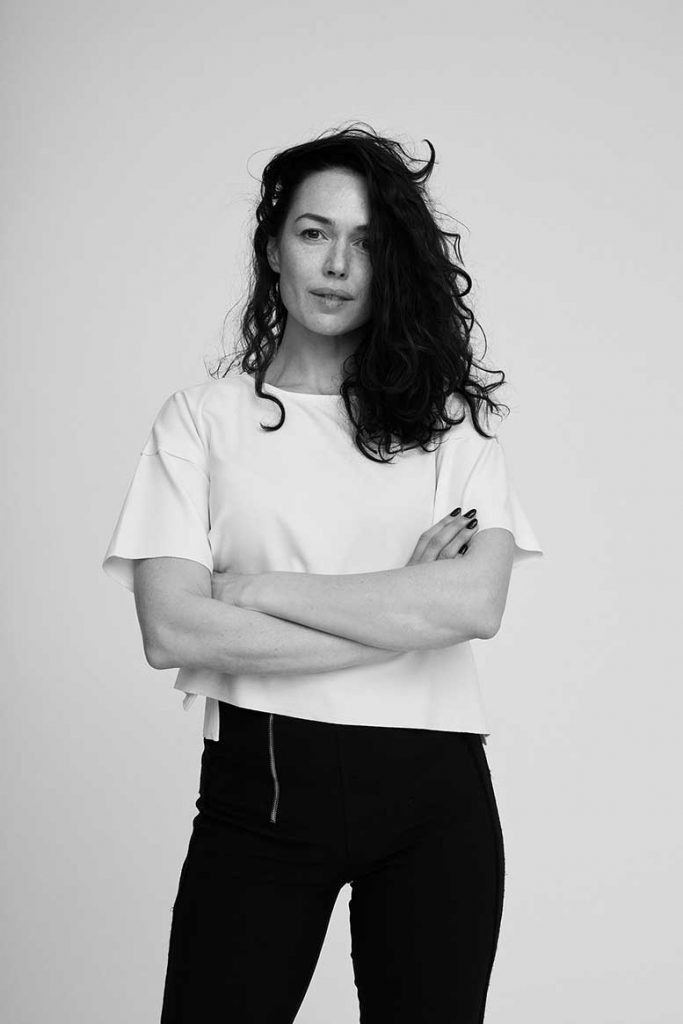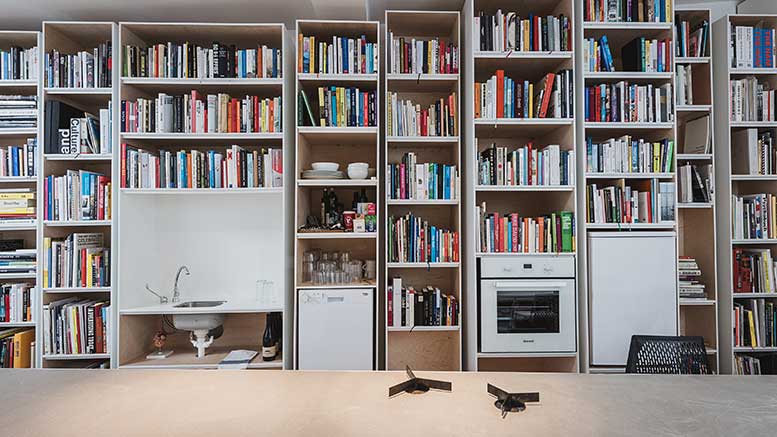“The most important thing to remember as a creative practitioner during this crisis, is that it is only a crisis as long as you haven’t fully adapted to these new circumstances.”
Nina Raftopoulo
Strategist and curator Nina Raftopoulo talks about her role at Independent Connectors and the seductive freedom of endless possibilities in and interview with Sonalee Tomar.

How do you describe yourself in the context of challenging people’s perspectives via your work?
As an unorthodox strategist my role is to challenge our client’s perspectives in every possible aspect. Very often people come to us with a bunch of predefined questions about their practice and then we end up contemplating on their higher purpose. This process can be quite intense, because instead of using tools and models that supposedly anticipate the future, we usually make them turn around and tell us about their past. Why did they start their practice? What was their initial motivation? This is a very intuitive, very emotional and sometimes even spiritual approach that people do not expect from a strategic consultancy. It is, however, very rewarding to dig a little deeper and explore the unknown, as opposed to finding easy solutions on the surface.
The very wise Richard Rudd once said,
“The heart is not strategic. It is, however, completely tactful.”
I guess, my role at Independent Connectors is to make my clients listen to their own beat.
Tell us about your long-term vision. Is it safe to say that Independent Connectors is a step towards manifesting this vison?
To us, the name “Independent Connectors” actually embodies the vision. It acts as a prophecy, if you will. We are an independent collective that creates beautiful connections between individuals and organizations that wouldn’t usually come together. We believe, that we can help create new collectives. And we hope to do so for as long as we can. So, to be honest, there is no strategic pathway that we walk on in order to achieve a certain goal. All we know is that we want to be open to everything and everyone. The next step for us might be that we become a completely different entity – an artist collective, a global think tank, a dance tribe or a large corporation. It is this freedom of endless possibilities that is so seductive and exciting to us.
How do you deal with the conceptual difficulty and uncertainty of creating something completely new with each project?
It can be very difficult to give birth to something that is completely new. Even when you are lucky enough to come up with an original idea, you still need a lot of stamina to execute it. The hardest part is to accept that there aren’t any reference points; to see if your project will work or how people will react to it. If you want to create something that is truly new, you have to be fearless. You have to be completely independent from the market, your own peer group, and everyone you secretly want to impress. And I think this goes for every artist, every brand, and every industry.
Steve Jobs did it, Hilma af Klint did it, many many people did it, but it’s extremely difficult, especially when you do it on your own. I admire everyone who carries the burden of the solitary genius, having to create matter out of thin air. Luckily, we are a collective, so we get to experience the feeling of uncertainty together. And instead of creating homogenous solutions, we get to create diverse connections. So, I guess, our conceptional (and emotional) difficulty is to endure and ultimately embrace this diversity.
Karuna Kompass
One of our most intense projects, in terms of diversity, is the Karuna Kompass. Karuna Kompass is monthly newspaper for homeless people in Berlin that we create together with former street kids. Last month we decided to comment on the Black Lives Matter movement by printing an entirely black cover and filling the inside pages with artworks by three relatively unknown artists from Africa, Tsoku Maela , Williams Chechet und JD Kannah. We were terrified to receive backlash from different groups, and to be honest, not everyone was happy. The sellers complained about the black ink on their hands and a few people were angry, because we hadn’t written a substantial comment on the movement itself. I’m happy we didn’t listen to what people said. There are now 30,000 copies out on the streets of Berlin. Hopefully, this will start more conversations.

How do you balance the contradicting elements of your work?
I don’t think of it as a bipolar pendulum that you should balance out. To me, personally, there can only be balance if you knock down the walls between personal and professional, commercial and creative, inner and outer, while at the same time acknowledging the many different needs each aspect has. Two very important questions that you should ask yourself everyday are, “what do I need as an individual in the system I act in?” and “what does the system I act in need?”. You can solve so many conflicts within yourself or with others if you ask those questions on a daily basis.
Tell us about your creative philosophy. How does it all come together?
Sometimes it comes together and sometimes it doesn’t. And when it does, it’s pretty magical. Combining strategy, aesthetics and spirituality is a very new and therefore difficult endeavour. We often have a hard time explaining what we do, how we make money, and why we sometimes don’t even earn any money at all. We don’t seek profit or recognition. To quote the late artist Bas Jan AderWe, we are “in search of the miraculous”. This is what our curators at Independent Collectors are taught to do when they choose artworks for our online exhibitions. We don’t want to feature the obvious, instead we want to find hidden gems that astonish us and our community. This also goes for Independent Connectors.
Our team here consists of consultants, writers, designers, and filmmakers who develop creative formats, mostly for brands and foundations. A format can be a film, a book, a panel discussion, a podcast, a magazine, a digital platform. Any medium that can help our clients communicate their cultural or social engagement, their future vision, their products or services. The medium is not crucial to the success of your communication, your narrative is. If you can tell a captivating story, you are more likely to succeed in this over-saturated market. In the realm of communication this is nothing new. Every agency under the sun is talking about storytelling at the moment, but only a few do it well.
I truly believe that the world needs more poets.
If I was the CEO of a large corporation like BMW, Adidas or Google, I would hire poets, philosophers and artists. People like Armen Avanessian, Nina Canell, Brit Marling or Mario Pfeifer. Connecting these antipodes is probably our most fundamental philosophy.
Lets talk about your frameworks, references and process. What inspires you? (vision, ethos, values)
We live and work with contemporary art. Our office is called “the library” because it contains more than 4,000 non-fictions books. It was designed by our friend Sam Chermayeff as a multifunctional space for both contemplation and communication. There are artworks such as Slavs and Tatar’s “Kitab Kebab”, a neon sign by David Horvitz that reads “whenever I take a shower I always wonder when the water was a cloud”, works by Hague Yang, Lynn May Saeed, Peter Piller and many more.
The space is an important source of inspiration, not just for us, but also for our clients who come here for workshops. In terms of strategy tools, a very important model for us has been “Spiral Dynamics Integral” by Don Beck and Chris Cowen, as well as Ken Wilber’s book “A theory of everything”. If you want to understand your current context and especially your future context as an individual or as an organization, these teachings are very inspiring.

Tell us about your own personal evolution, vis a vis the work that you do. What have you observed re the changing cultural landscape over time?
I studied political science for a few years but later changed my major to communication design. This was a pretty radical change because it catapulted me into the world of advertising. I worked as an art director for many years so my main job was to make sure that things look good. At times there was an unbearable lack of substance and it kind of felt like I was working at a gift shop on the deck of the titanic.
When I met my business partner Christian Kaspar Schwarm, my whole personality was a product of superficiality. He was the one who finally made me step outside of that world and introduced me to his perspective on contemporary art, politics and spirituality. It was a huge gift and even culminated in founding Independent Connectors. I am very grateful to him for teaching me the importance of integrating all of my seemingly contradicting traits into one practice. It is never “either/or”. And I think we are seeing this in many different areas of life right now.
Future projects: What are you working on now? What can we look forward to?
We are currently planning the 6th edition of the BMW ART GUIDE by Independent Collectors. This is a book that we are very proud of, because it is a testament to our long-term partnership with BMW. Cultural-entrepreneurial collaborations can be difficult because they are often based on a binary transaction: Money vs. logo placement for instance. When a brand tries to position themselves in the art world by mere sponsorship, they always run the risk of becoming completely exchangeable.
This is why we believe that brands should create substantial formats within the art world to guarantee a long-lasting benefit for all parties involved. The BMW Art Guide is a great example. What started off as an ambitious task back in 2012 to gather a world-wide list of privately-owned contemporary art collections with public access, resulted in a pocket-sized publication with the hope to increase the accessibility of privately-owned art to the general public. Over the years the book has become a standard reference in the art world and has helped BMW to manifest their outstanding cultural engagement. They couldn’t have done it without us and we couldn’t have done it without them.
What were you working on when the lockdown was announced?
We were working on many digital projects that weren’t affected too much by the lockdown, but there was one film project that was put on hold. We had been filming a wonderful documentary for a Berlin based company that we were supposed to present at their 100th jubilee in June. The event was of course cancelled due to the pandemic. The film is yet to be released.
How has this affected your practice and plans?
Luckily, we have a scalable, as well as a digital business model, so we haven’t been as affected by the pandemic as other companies have. However, we do miss the physical encounters with our clients and partners, since they are the basis of the kind of deep connections we want to form. In terms of plans for the future, I can only say that we stopped making any plans. This is a time to go with the flow.

What would elevate the life of creative practitioners during this period?
The most important thing to remember as a creative practitioner during this crisis, is that it is only a crisis as long as you haven’t fully adapted to these new circumstances. Yes, we live in a time that is scary, unnerving, and often too complex to cope with, but what we mustn’t forget is that we also live in a time that is unusually saturated with meaning. The pandemic is a massive accelerator to something new and there is so much to reinvent. In art, in science, in academia, in business. There is so much to make better than it is. In the past few months, we have been forced to contemplate mortality. We have formed new communities, new collectives and new tribes. All of this means something.
So if I can tell you anything of value, anything that can help a struggling creative, it is this quote by one of my favourite film makers Brit Marling:
“Hold on to your tribe. Dream impossible things. And then go forward and do them, because you absolutely can – together.”
What kind of critical inputs does the creative world need at this moment to overcome the loss of income and opportunity as a direct result of the lock-downs worldwide?
If the lockdown has caused you to loose all of your income, you should not wait around until the pandemic is over. You are already being forced to either continue with your practice without making any money or change your practice to something where you can make money. As painful as this may seem, it is actually a blessing in disguise. I’m seeing this a lot with my students at Popakademie, a musical college, where I teach strategy. The students are mostly musicians and all they want to do is be on stage. It is very difficult for them to think about the future right now. When will they perform again? How will they make a living? I want to tell them that everything will be ok, but I don’t even know if that’s true. All I know, is that they have been creating beautiful music during the lockdown.
For enquiries contact Nina Raftopoulo: nina [at] independent-connectors [dot] com
Before you go – you might like to browse the Asian Curator curatorial archives . Contemporary art curators and international gallerists define their curatorial policies and share stories and insights about the inner runnings of the contemporary art world.












Add Comment